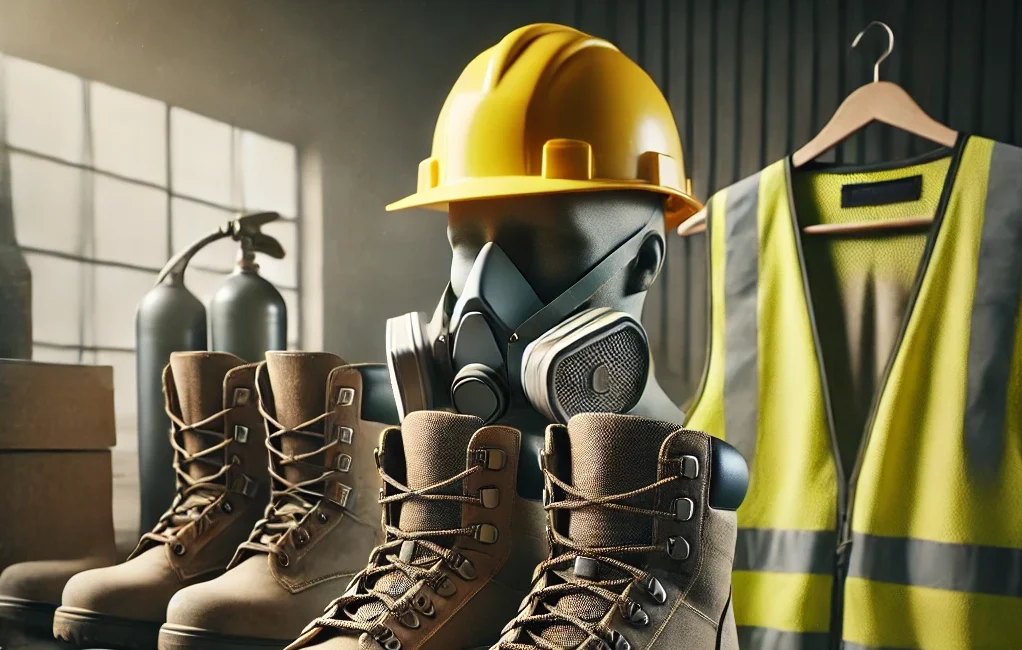When you handle pest control at home, safety should come first. Dealing with chemicals and pests can be risky, but using the right Personal Protective Equipment (PPE) helps you stay safe. Here’s a straightforward guide to the essential PPE you need for safe and effective pest control.
1. Respirators and Face Masks
Breathing in toxic fumes from pesticides is dangerous. A respirator or face mask as part of your Personal Protective Equipment protects your lungs. Depending on the pesticide, you may need a specific type, like an N95 or P100 respirator. These block harmful chemicals. For dust or fine sprays, a dust mask might do the job but be sure to always check the pesticide label for the recommended respiratory protection. That being said I’ve always been a fan of a 3M respirator, (https://amzn.to/4dN2zP6) Of course you can’t go wrong with a N95 for dust formulations where a half face may not be needed. (https://amzn.to/4fRopTD)
2. Eye Protection
Chemicals can seriously harm your eyes, causing burns, irritation, or even blindness. Safety goggles or a face shield as part of your Personal Protective Equipment protect against splashes and airborne particles. Choose goggles that fit well and shield your eyes completely. Sometimes, a full-face respirator is best, giving you both eye and respiratory protection. (https://amzn.to/4dPMp7M) Goggles ( https://amzn.to/3yDPOI1 ) Googles for glasses ( https://amzn.to/46UCtHY )
3. Gloves
Your hands are often the most exposed when handling pesticides, but with proper Personal Protective Equipment like nitrile or rubber gloves, you create a barrier between your skin and harmful chemicals. Nitrile or rubber gloves are best since they resist many chemicals. There are a lot of things to avoid, for instance, avoid cloth, leather, or regular household gloves, which can absorb chemicals and always check your gloves for holes before using them. Gloves Nitrile Standard ( https://amzn.to/3MclDuF ) Gloves Heavy Duty ( https://amzn.to/4fUfjVZ )
4. Protective Clothing
Cover your skin to avoid direct contact with pesticides as not doing this can cause serious issues. Examples of Personal Protective Equipment include wearing long-sleeved shirts, long pants, and closed-toe shoes. For more protection, consider wearing a chemical-resistant suit like a Tyvek coverall. These suits keep chemicals from soaking through to your skin. Avoid wearing absorbent clothes like cotton, which can trap chemicals. Tyvek Suit ( https://amzn.to/3YOBcjD )
5. Footwear
Wear sturdy, closed-toe shoes or boots during pest control and for added safety, especially with liquid pesticides, use chemical-resistant boots. As a result these pieces of Personal Protective Equipment prevent chemicals from reaching your skin. Steel-toe boots are useful if you’re working with heavy equipment.
6. Hearing Protection
Hearing protection is important if you use loud equipment like foggers or sprayers. Prolonged noise can damage your hearing, so use earplugs or earmuffs as part of your Personal Protective Equipment to protect your ears. Earmuffs ( https://amzn.to/3YViV4i ) Earplugs ( https://amzn.to/3YQ0nSZ )
7. Head Protection
We talked about hearing protection, but what about head protection? If you’re working in tight spaces or with overhead equipment, wear a hard hat. This important piece of Personal Protective Equipment protects your head from falling objects or accidental bumps. Baseball Cap Style Hard Hat ( https://amzn.to/3McQ1oy )
Conclusion
Using the right Personal Protective Equipment for DIY pest control keeps you safe from harmful chemicals and injuries. Therefore, investing in quality gear and following the safety instructions on pesticide labels will keep you safe. Now, with these proper precautions, you can tackle pests confidently and keep your home safe.


No responses yet